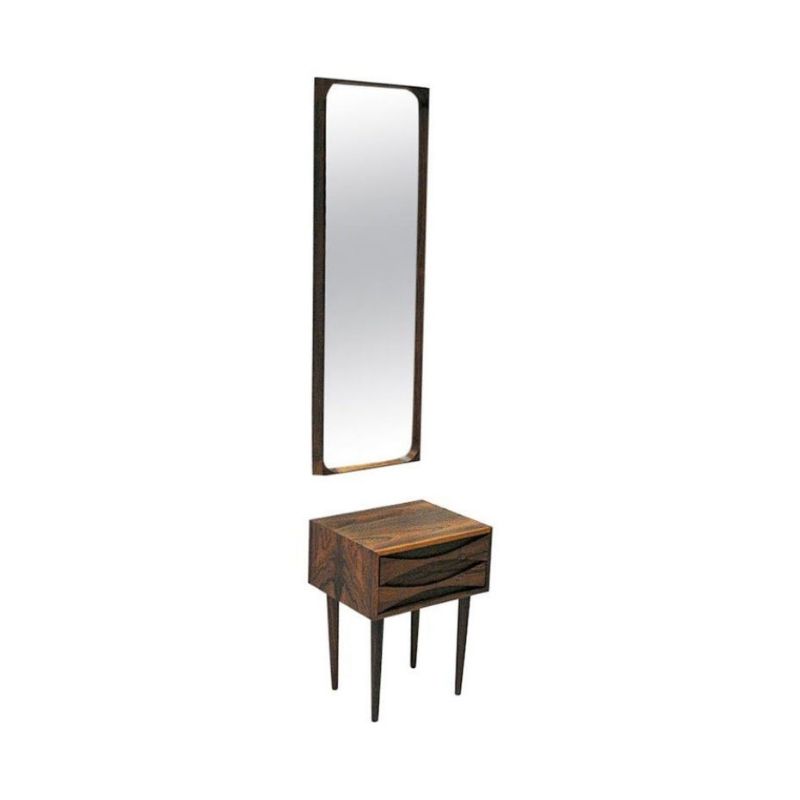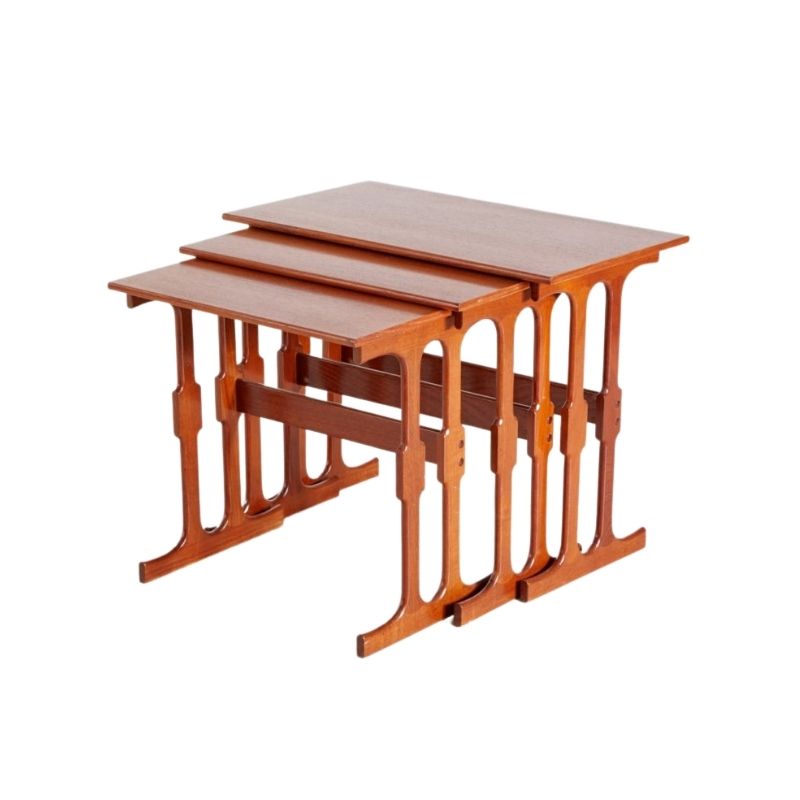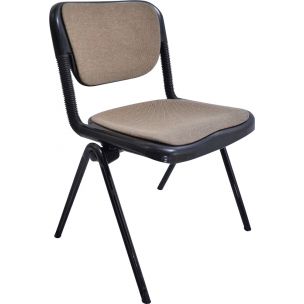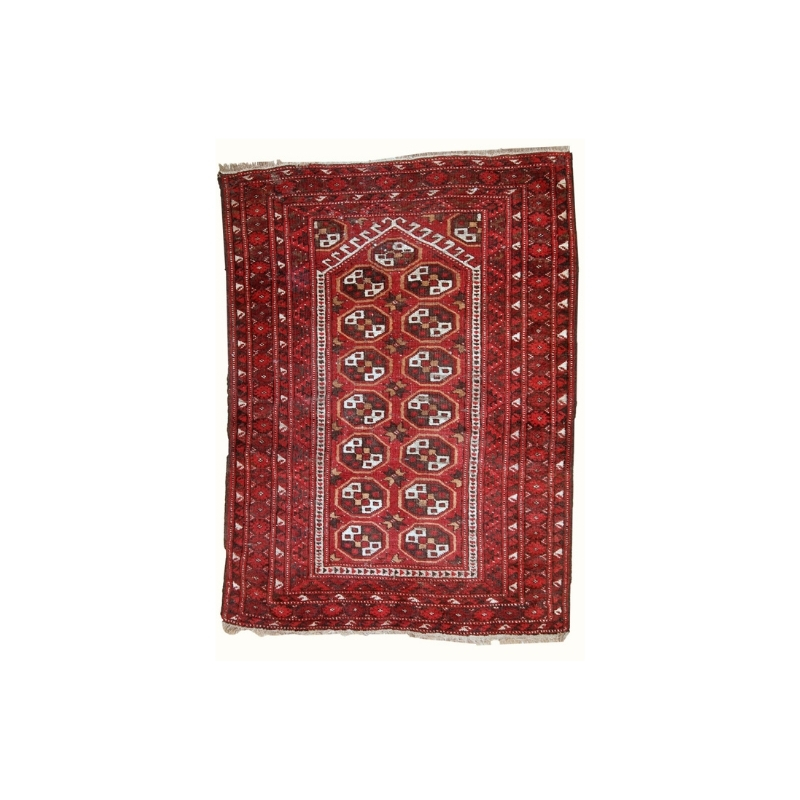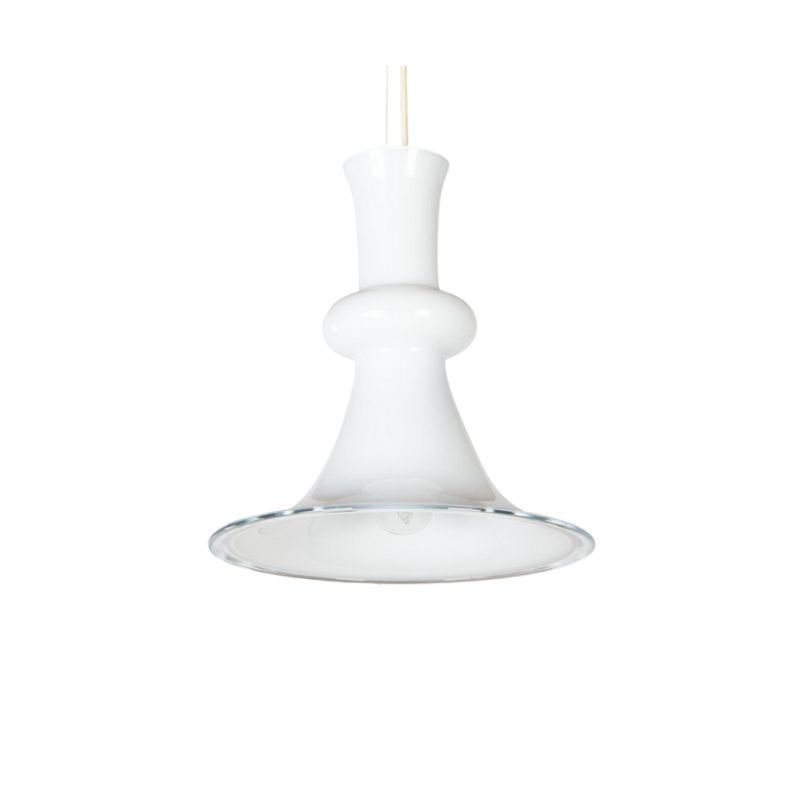Is the seam around the top an...
Is the seam around the top and sides of the chair hand stitched or machine stitched?
If it is hand stitched, then they probably stitched the seat and front as one piece on a machine, bolted the arms on from the back, and then hand stitched the back on in situ.
If it is machine stitched, the arms are probably permanently attached (pegs and glue), and there is some tricky way the upholstery was slipped over the frame.
Also, are there armholes in the upholstery? (They would probably be hemmed). If so then it was probably slipped on, with the armholes squeezed over the arms and into a groove at the base of the arms.
It might be possible that they sewed the front and back together, set it on the front of the chair, inside out, put the arms in place inside the inside out upholstery, screwed them on from the back through the front layer of upholstery, and then puledl up the back and stretched it over the top and down into place.
I can't see how that last scenario would have
worked, leif--not unless the fabric was extremely stretchy. And even then, probably not. The back is just too high.
The arms are probably attached with dowels. The seam around the back looks machine sewn, and there's no hem around the base of the arms. I think the inside and outside back pieces were machine sewn and tugged onto the frame, then the arms were stuck on.
The arm appears to be doweled
I found this image of the same chair online. From this angle it appears that the arm is doweled and that the upholstery is sewn, fitted and then the arm set. Try getting the old upholstery off in one piece if you can (pick apart the stitches).
From some of the other images of reupholstered ones it seems you can get quite a lot of pressure against the fabric and foam. This would be done by clamping the arm in place while the glue sets. May not be the easiest item to clamp because of the shape. You would also have to be very careful about the amount of glue you use so you don't get any on the new upholstery.
spanky: I think you are...
spanky: I think you are probably right. The upholstery is sewn, fitted, then the doweled arm if glued on through the upholstery, and clamped. Especially in a production environment, you could follow that procedure and crank these chairs out quickly.
If so it will make getting the arms off tricky. But there is probably space between the arm and the frame where the foam has shrunk to powder to get a hand saw in and cut through the dowels.
Then there is a trick to remove the old dowels: drill the center of the dowel with a smaller bit, maybe 2/3 the size of the dowel, then you can use a screw driver or similar tool to break the rest of the dowel out of the hole. Clean the hole with the appropriate sized bit, and insert new dowels.
One of the other methods
One of the other methods I use for removing broken dowel is to cut them flush to the surface. Take a pin punch slightly smaller than the dowel and give it a good hit. Very often the dowel is not set full against the back of the sleeve and this can break the hold of the old glue and force the dowel slightly further in. Then you can drill a small hole, pop in a long screw and using pliers etc pull the dowel out whole.
If it doesn't work (the screw pulls out) you at least have the start of the sleeve as a true guide for your last drill-bit and you no longer have the edge of the dowel attached to the sleeve wall making it easier to finish cleanly.
It doesn't always work of course but when it does it saves a heap of time gets a nice clean result.
If you need any help, please contact us at – info@designaddict.com




